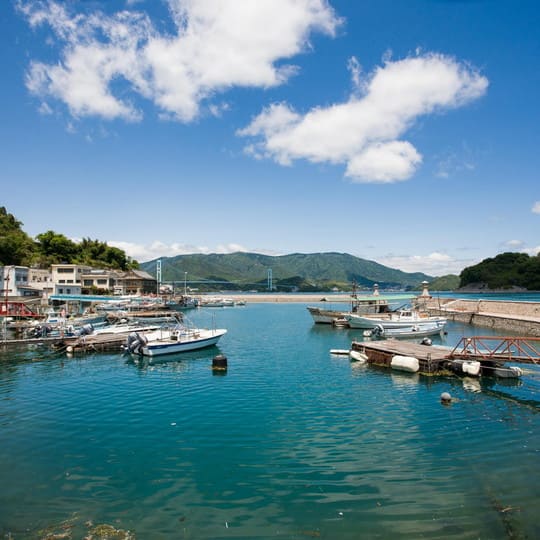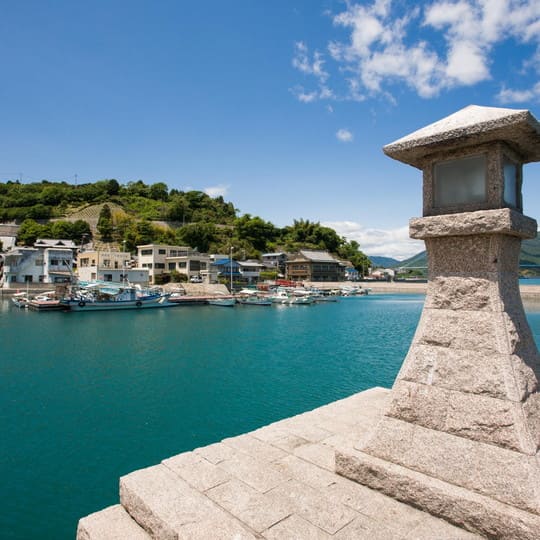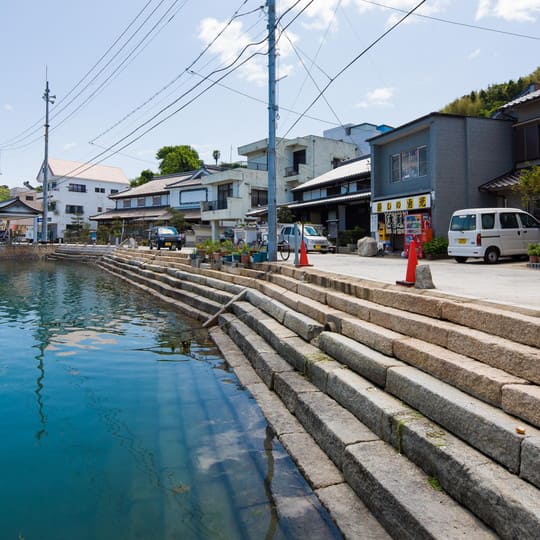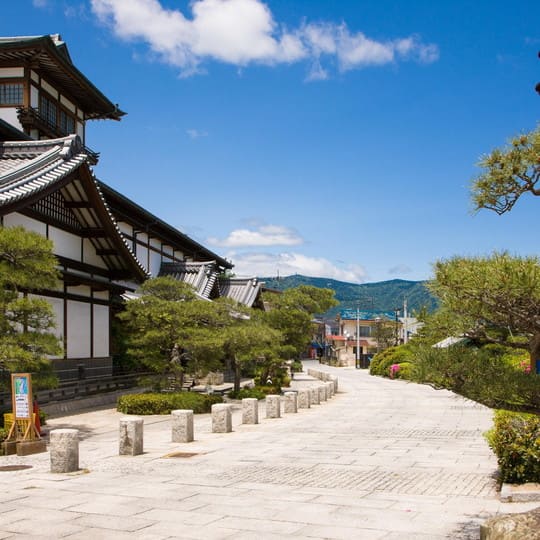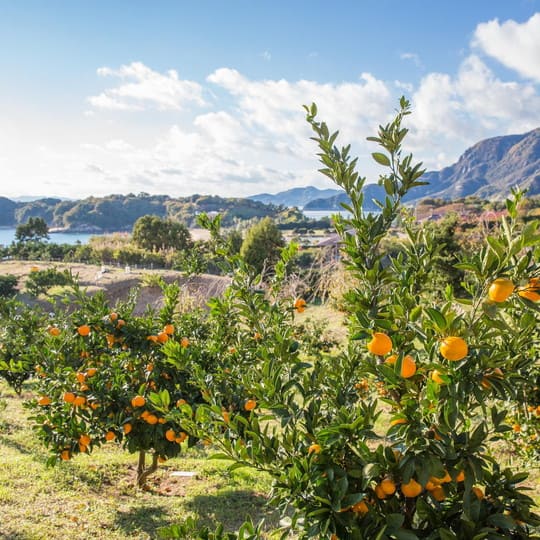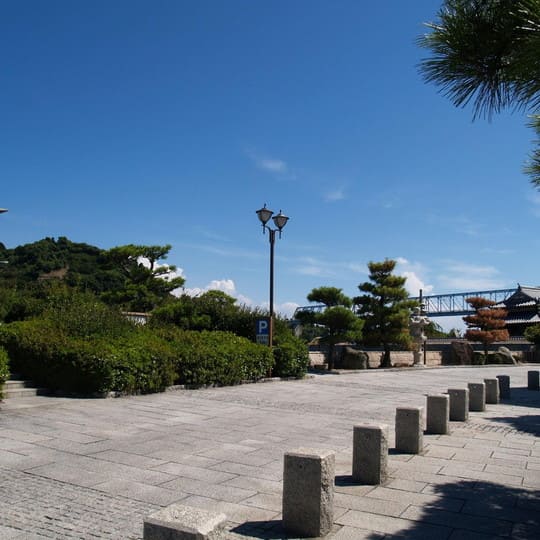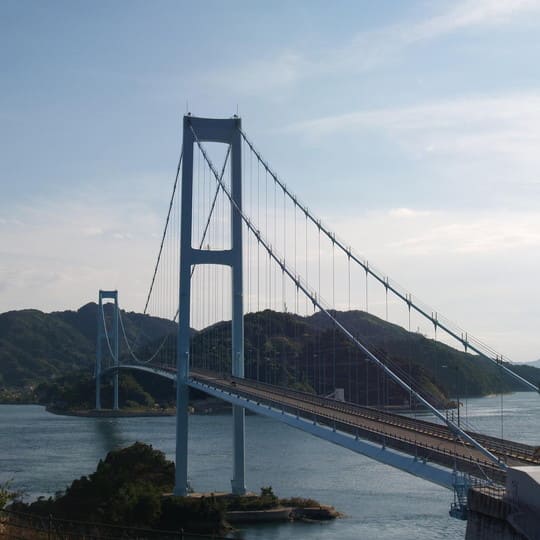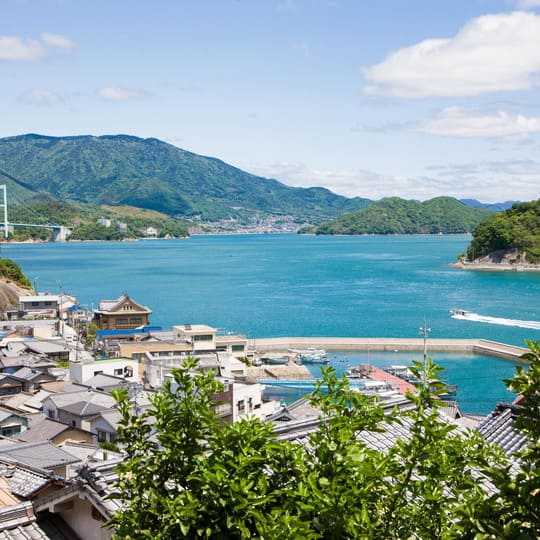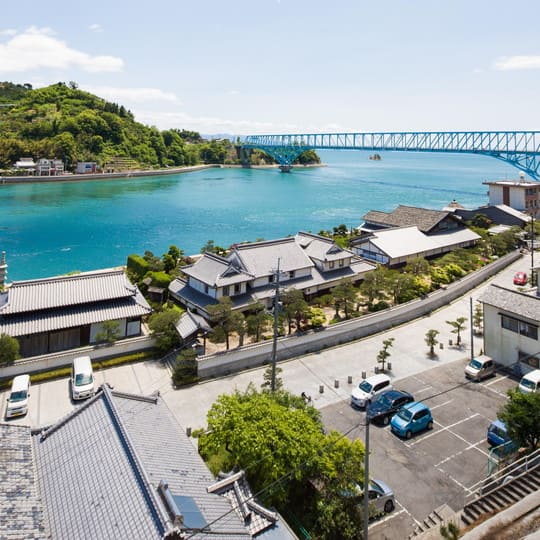Perfect for A Stroll, Peaceful Island Scenery and Historical Streets
Located offshore at Kure city, Hiroshima prefecture, the island in the foreground with the appearance of a calm Japanese garden is Shimo-kamagari Island. Known as “Garden Island”, the whole island is landscaped. As well as beautiful scenery, wooden museums and art galleries are scattered along the stone-paved streets. The peaceful island scenery and historical streets are perfect for a stroll.
The town was considered important enough to host a number of diplomatic missions in the feudal period, most notably the Koreans and the Dutch. This simple row of houses near the inter-island strait has had a long and international history, formerly used as inns for the noblemen who once passed through. Evidence of these missions can be seen at the Shoto-en, in the form of hundreds of artifacts from around the world. But it is the gardens themselves that most impress, awing even the Korean statues that bow reverently to the handful of buildings on site.
It would be easy to spend a full day here, visiting some of the nearby galleries and proud Edo Period houses. But I have one last bus to catch. Along the way to the bus stop, I hear some great old classic jazz coming from Maruya cafe. Overlooking the water, it is the perfect place to linger awhile, again to be tabled to a future date. As it is, the owner makes a take-away panini for me, and as my bus rolls and pitches its way toward the final bridge toward Kure, I enjoy the taste of curry. It seems fitting.
The town was considered important enough to host a number of diplomatic missions in the feudal period, most notably the Koreans and the Dutch. This simple row of houses near the inter-island strait has had a long and international history, formerly used as inns for the noblemen who once passed through. Evidence of these missions can be seen at the Shoto-en, in the form of hundreds of artifacts from around the world. But it is the gardens themselves that most impress, awing even the Korean statues that bow reverently to the handful of buildings on site.
It would be easy to spend a full day here, visiting some of the nearby galleries and proud Edo Period houses. But I have one last bus to catch. Along the way to the bus stop, I hear some great old classic jazz coming from Maruya cafe. Overlooking the water, it is the perfect place to linger awhile, again to be tabled to a future date. As it is, the owner makes a take-away panini for me, and as my bus rolls and pitches its way toward the final bridge toward Kure, I enjoy the taste of curry. It seems fitting.

